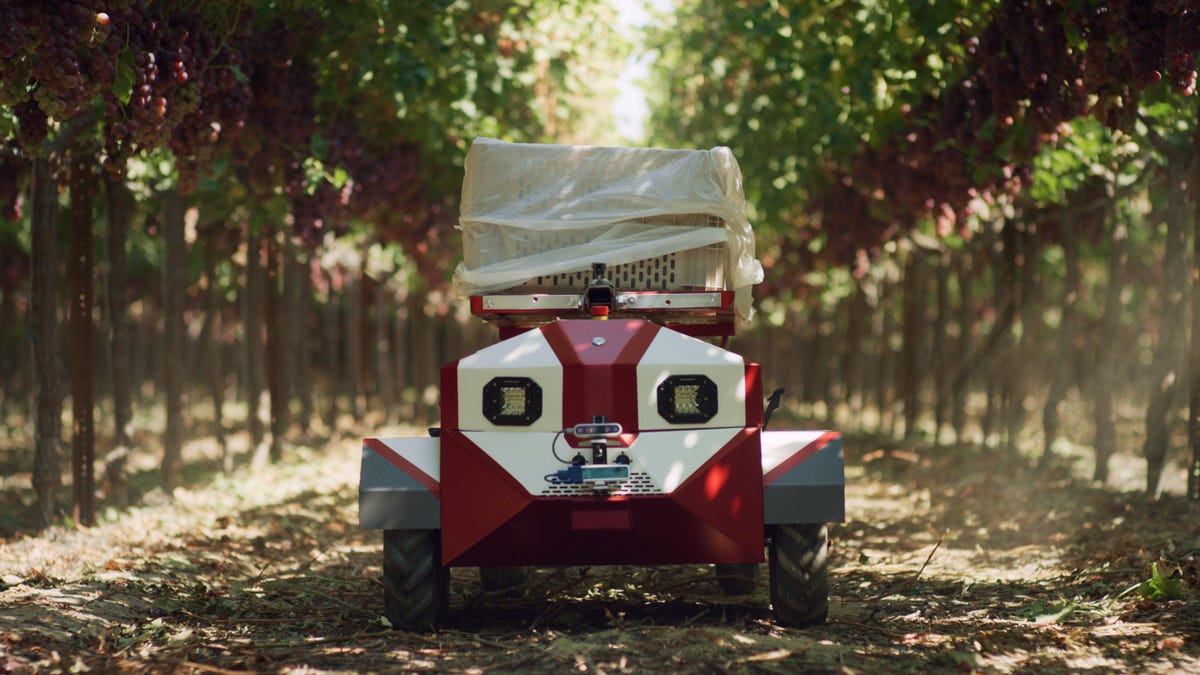
Farming is a tough business. Global food demand is surging, with as many as 10 billion mouths to feed by 2050. At the same time, environmental challenges and labor limitations have made the future uncertain for agricultural managers.
A new company called Future Acres proposed to enable farmers to do more with less through the power of robots. The company, helmed by CEO Suma Reddy, who previously served as COO and co-founder at Farmself and has held multiple roles and lead companies focused on the agtech space, has created an autonomous, electric agricultural robotic harvest companion named Carry to help farmers gather hand-picked crops faster and with less physical demand.
Must read:
Automation has been playing an increasingly large role in agriculture, and agricultural robots are widely expected to play a critical role in food production going forward. The transition to automation in agriculture has prompted a race between new developers like Future Acres and legacy companies with deep roots in agriculture. Automation technologies from companies like John Deere, for example, are helping farmers to produce more with less and create more successful crops, all while having a smaller impact on the land and environment. John Deere is employing AI and machine learning in its equipment to identify and enable needed actions at a scope and speed beyond human capacity, automating farming actions through smart robotics to enable consistent and precise actions at large scale, and providing precise, geospatial intelligence generated with machine technology and coupled with cloud-stored data to enable sustainable farming.
COVID-19 has only accelerated the need for automation. Farm income is expected to fall 12% to $79.4 billion in 2021, according to the Food and Agricultural Policy Research Institute, with production costs only climbing. The U.S. Department of Agriculture forecasts total production expenses to increase by $8.6 billion (2.5 percent) compared to 2020 – reaching $353.7 billion in 2021 due to a higher spend on feed, fertilizer, and labor. Optimization and reducing cost are paramount for the industry to recover from the challenges of the pandemic — and that’s exactly automation’s selling point.
“The agricultural industry is facing a seemingly never-ending list of challenges on both a financial- and sustainability-level,” says Future Acres CEO Reddy. “Our vision with Carry was to develop a tool and system that could help alleviate these stressors and move the industry forward by providing a helpful operational solution capable of supporting workers, while also reducing costs. Carry is the future of harvesting and will make an immediate impact on the lives of those in the field each and every day.”
The company’s robot, Carry, uses artificial intelligence, automation, and electric power, to transport up to 500 pounds of crops during harvest. Via computer-vision-powered autonomy or through remote control operation, Carry autonomously follows farmworkers for a whole day’s work thanks to a 7-10 hour battery range or 6-10 miles traversed terrain navigation. It works on all terrain and in all inclement weather conditions, increasing production efficiency by up to 30% and paying for itself in only 80 days, according to the company. Its machine learning and computer vision capabilities also allow the machine to avoid obstacles like trees and people. Much like shelf-scanning robots do for retail environments, Carry also collects data that can be used to make important farm management decisions.
Future Acres will roll out Carry to small- and medium-sized farms throughout the United States. It is backed by lead investors Wavemaker Partners, a global Venture Capital fund with $400 million AUM, and Wavemaker Labs, a robotics and automation-focused venture studio. It’s currently raising $3 million in seed capital via equity crowdfunding site SeedInvest.





More Stories
U.S. charges FTX founder Sam Bankman-Fried with criminal fraud
Time series forecasting with XGBoost and InfluxDB
Full-stack engineering is one-third as good